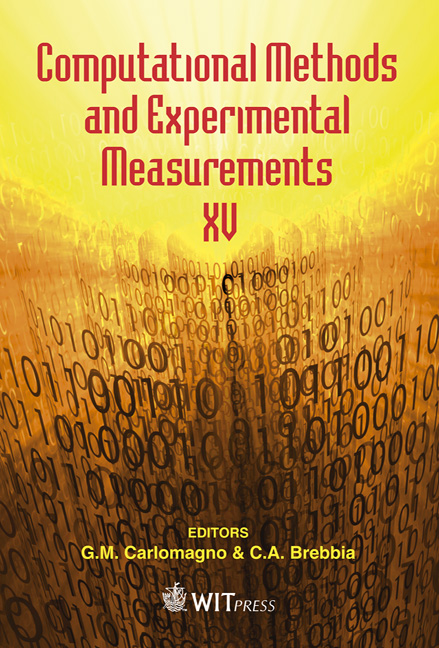Numerical Simulation Of Blowing Ratio Effects On Film Cooling On A Gas Turbine Blade
Price
Free (open access)
Transaction
Volume
51
Pages
14
Page Range
279 - 292
Published
2011
Size
962 kb
Paper DOI
10.2495/CMEM110251
Copyright
WIT Press
Author(s)
H. A. Daud, Q. Li, O. Anwar Bég & S. A. A. AbdulGhani
Abstract
This article investigates the film cooling effectiveness and heat transfer in three regimes for a film-cooled gas turbine blade at the leading edge of the blade with 450 angle of injection. A Rolls Royce blade has been used in this study as a solid body with the blade cross section from Hub to Shroud varying with a degree of skewness. A 3-D finite-volume method has been employed (FLUENT 6.3) with a k turbulence model. The numerical results show the effectiveness cooling and heat transfer behavior with increasing injection blowing ratio BR (1, 1.5 and 2). In terms of the film cooling performance, high BR enhances effectiveness cooling on pressure side and extends the protected area along the spanwise direction from hub to shroud. The influence of increased blade film cooling can be assessed via the values of Nusselt number in terms of reduced heat transfer to the blade. Keywords: turbine blade, film cooling, blowing ratio, CFD, heat transfer, effectiveness cooling. 1 Introduction Increasing the thrust, overall efficiency and reducing the fuel consumption as much as possible are major issues in modern gas turbine engineering, and this is generally achieved via increasing the turbine inlet temperature. These higher temperatures however have detrimental effects on the integrity of high pressure turbine components and materials composing the turbine blades. Film cooling technology is justified to protect blades surfaces from incoming hot gas and for increasing life time. Numerical and experimental studies of three-dimensional
Keywords
turbine blade, film cooling, blowing ratio, CFD, heat transfer, effectiveness cooling





